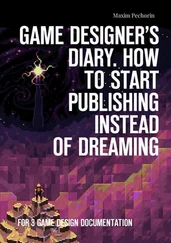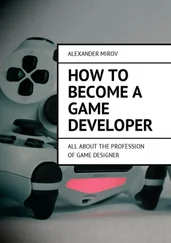Among the currently most successful F2P online games are LEAGUE OF LEGENDS, which brought in almost a billion dollars worldwide in 2014, as well as CROSSFIRE and DUNGEON FIGHTER ONLINE—both sitting at about 900 million dollars each. 28In the field of F2P casual games, three count as the most important measuring sticks for all others: (1) FARMVILLE (2009), which had, at one point, over 80 million monthly users on Facebook 29, stayed the most popular game for two years, despite attacks from critics 30and brought in more than a billion dollars in revenue; 31(2) ANGRY BIRDS (since 2009), which in 2014 had been downloaded more than 2 billion times in its various incarnations, 32and (3) CANDY CRUSH SAGA (2012), which in 2013 was played daily by 93 million people for more than a billion plays, while around 4% of players made in-game purchases 33. Analyzing the MMO Game Marketplace, Cameron Koch states: “Free-to-play works because it eliminates any barrier for entry, and allows developers to penetrate markets that otherwise might be unable to play traditional console video games. […] By having millions upon millions of players, even a small percentage of players paying money regularly can add up big time.” 34
As influential for the development of games was the establishment of virtualized and globalized subscription models, as they existed in principle during the early modern era at the beginning of the production of printed books. Games, which cannot find funding through traditional channels, can be financed on platforms like Indiegogo (founded 2008), Kickstarter (2009), or the German Startnext (2010). By its own account, Kickstarter alone had collected 1.5 billion dollars for 75,000 projects across 220 countries by the end of 2014, among which was a quarter-billion dollars for more than 4,000 digital games. 35So far, the most successful game projects on Kickstarter have been TORMENT: TIDES OF NUMENERA, which raised 4.2 million dollars in 2013, PROJECT ETERNITY (later titled: PILLARS OF ETERNITY), which reached 4 million in 2012, as well as MIGHT NO. 9, which made 3.8 million in 2013. 36The “upcoming space trading and combat simulator” 37STAR CITIZEN, by the game design veteran Chris Roberts (WING COMMANDER, 1990) has managed, through a combination of traditional Kickstarter campaign and a self-run crowdfunding website, to accumulate over 85 million dollars between 2012 and 2015. 38
Just as with the older audiovisual media of theater, film, and television, the economic potentials of digital games are based on the requirement that products achieve a certain technical and artistic quality. A decisive structural condition has emerged only over the last decade with the increase of technical options: small groups and even individuals now possess means of production that two decades ago were the exclusive privilege of large companies and corporate groups and, thereby, also only of highly specialized experts. Admittedly, with access to these new technical means comes the challenge to use them artistically in a way that is appropriate and creative. Four developments influenced game design over the last decade:
A latent stagnation and aesthetic crisis of AAA titles developed through a high degree of division of labor;
The rise of a so-called indie scene, whose ‘small’ games are anchored outside of the commercial mainstream and tend towards artistic experimentation and breaking out of traditional schemas;
A proliferating differentiation into evermore specific subgenres combined with a strong increase in the number of titles being produced;
The introduction of practices and mechanisms of game development into other production and service areas. 39
The last of these proves the outstanding position that digital games occupy in the emerging digital media dispositif. Once upon a time the new medium of film influenced the other, older arts: theater and the novel, painting and music developed cinematic qualities. No differently, digital games—namely their aesthetic qualities, such as the mass phenomenon of their interactive reception—are influencing media production and consumption today, especially in the areas of the competing audiovisual media of film and television. Parallel to that the procedures of game design as a production method for audiovisual media are becoming a central practice of digital culture—from the adoption of ‘world building’ 40, as it is a common practice in game design, by advanced film productions or by the diverse visualization attempts in research and industry to the ‘gamifying’ applications of game design principles in marketing or knowledge transfer. 41As a basic tendency one can thereby identify a ‘democratization of game design’: a steady cheapening and simplification of the financing, conception, production, global distribution and use of digital games. 42
In II Game Design I will first analyze the double origins of game design: on the one hand from practices of analog design, especially its principles of prototyping and iteration that have arisen since the beginning of Industrialization in the context of producing hardware artifacts ( II-1 Analog Design ); on the other hand from practices of digital design that developed since the mid-20th century in the context of software production and visual design ( II-2 Digital Design ). Due to these dual origins during the last half-century in the design of digital games, the development of highly different procedures took place: The non-commercial beginnings in the academic hacker culture of the 1960s and 1970s gave way to the professionalization of the game industry, following in the footsteps of the industrial, highly collaborative role model of film production and especially that of Hollywood. Since the turn of the century an indie scene is also thriving that in its methods of working orients itself more closely toward the rather artistic role models of indie music and indie film ( II-3 A Short History of Game Design ). Next, I analyze the role of the Game Designer and the most important fields in the production of digital games ( II-4 Areas of Game Design ) as well as the standard procedures and processes in game production, including the basic principle of world building. In a special contribution, Nathalie Pozzi and Eric Zimmerman then provide a primer for the all-important method of playtesting ( II-5 Practices of Game Design ). Evidently game design is becoming a central discipline of creative production in digital culture. Its role model effect is changing the design of soft- and hardware, processes and experiences.
THINKING GAMES—GAME STUDIES
In contradistinction to the central and still growing importance of games as well as game design in digital culture, Game Studies continue to play only a minor role both in public perception and in academia. Groundbreaking monographs, which understood and interpreted games as a new medium and a new form of expression, were first published in the last decade of the 20th century, roughly 40 years after the development of early forms of digital games in research labs. The institutional establishment of Game Studies as an academic field only began in the early 21st century and parallel to the establishment of the first artistic-technical degree paths for game design. Anglo-Saxon and Scandinavian universities were pioneers of this process. In the German speaking world such an establishment is still pending:
“Although individual professors and assistant professors are, by now, beginning to make game studies a focal point, this is still not reflected in the disciplines (e.g. at the Technical University for Visual Arts Braunschweig, the University of Paderborn, and the University of Cologne). Beyond that, both small and large third-party-funded projects as well as (virtual) institutes for computer game research sprung into existence (for instance, at the Center for Art and Mediatechnology in Karlsruhe and at the University for Media in Stuttgart, or the Zurich University of the Arts). Finally, at the beginning of 2014, a novel professorship for game studies was established in the context of the artistic-academic bachelor ‘Digital Games’ at the Cologne Game Lab at the Cologne University of Applied Sciences. However, despite these advances, it is still impossible to speak of any fundamental establishment of the field in the German language-space.” 43
Читать дальше











